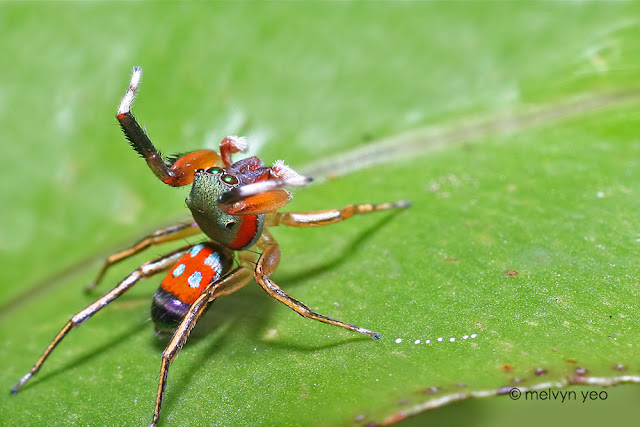The jumping spider family (Salticidae) contains more than 500 described genera and about 5,000 described species, making it the largest family of spiders with about 13% of all species. Jumping spiders have good vision and use it for hunting and navigating.
They are capable of jumping from place to place, secured by a silk tether. Both their book lungs and the tracheal system are well-developed, as they depend on both systems (bimodal breathing).
Jumping spiders are generally diurnal, active hunters. Their well-developed internal hydraulic system extends their limbs by altering the pressure of body fluid (hemolymph) within them. This enables the spiders to jump without having large muscular legs like a grasshopper. Most jumping spiders can jump several times the length of their body. When a jumping spider is moving from place to place, and especially just before it jumps, it tethers a filament of silk (or dragline) to whatever it is standing on. Should it fall for one reason or another, it climbs back up the silk tether.
 |
| White-Moustached Portia (Portia labiata) |
 |
| White-Moustached Portia (Portia labiata) |
 |
| Giant Ant-Like Jumper (Myrmarachne maxillosa) |
 |
| Pystira ephippigera |
 |
| Wide-Jawed Viciria (Viciria praemandibularis) Female |
 |
| Harmochirus |
 |
| Wide-Jawed Viciria (Viciria praemandibularis) Male |
 |
| Yellow-Lined Epeus ( Epeus flavobilineatus) |
 |
| Fighting Spider (Thiania bhamoensis) |
 |
| Mangrove Jumper (Ligurra latidens) |







No comments:
Post a Comment